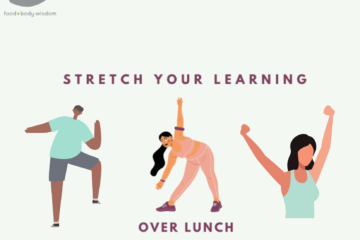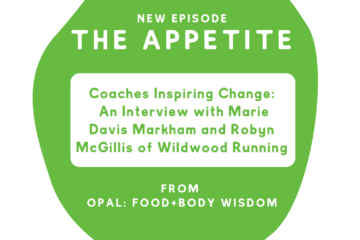7 Steps for white people: Preventing shame from getting in the way of your anti-racism work by Tina Alvarado, LMFT
TLDR: We as white people need to work on building up our shame resilience as a way to continue to engage in dismantling white supremacy. BIPOC lives depend on it. It is normal and okay to have hard feelings come up as you confront white supremacy in you, follow these steps for increasing your tolerance for these uncomfortable feelings so you can remain steadfast in your anti-racism work.
As a white latina and psychotherapist, I see one of my roles in anti-racism work as supporting other white and white-passing folks in exploring their racial identity, privilege, and role in systems of oppression.
I’ve noticed a lot of the same themes come up in therapy sessions over the past two weeks as my white clients are responding to new-found urgency to explore their whiteness.
I wanted to gather them in one place and share them here in the hopes that it will help other white and white-passing folks in their process. Let’s call it: “7 Steps for white people: Preventing shame from getting in the way of your anti-racism work.”
Let this be a starting off point for conversation and action. I’d love to engage with others around it as I continue to do my own work.
White people:
I want to address something that often gets in the way of our work when it comes to confronting and addressing the ways that we have internalized, participated in and contributed to white supremacy. SHAME. Specifically, low shame resilience. It is common to experience shame when we are confronting something we’ve done that contradicts our values or a blind spot we’ve had. When you have a low shame resilience, you likely have a hard time moving through experiences of shame and get stuck or immobilized by it. Sometimes we approach shame like it’s the boogey monster–don’t talk about it, don’t think about it, avoid it at all costs and maybe it’ll go away. Sometimes we get stuck in a shame spiral and can’t seem to find our way out.
Shame does not have to be so scary.
In fact, it is partly this response to shame that makes it feel so bad. The action urge associated with shame is hiding, it causes us to isolate and move away. Shame, just like any other emotion state exists for a reason. It has been evolutionarily effective: we are communal people and as such want to avoid anything that disconnects us from our community. Historically, to be disconnected from our people meant that we wouldn’t survive (think about the animal that gets separated from the pack and is vulnerable to prey). Present-day, that is not the reality. For the most part, especially if you’re white/cis/able-bodied/straight, to be separated from your group is not a threat to survival. The emotional toll of being separated from relationship and connection does have a detrimental effect on our mental and emotional well-being but that’s a topic for another time. However, the need to be connected is still biologically hard-wired into us. Thus, shame. The function of shame is to tell us when we’ve done something that violates our own values or our community’s values. Shame becomes a problem when it starts to control us, when we get fixated on how to avoid it, when it sends us into a shame spiral or keeps us stuck. Shame is also a problem when we get repeated “false positives”–feeling shameful about something that we don’t actually need to feel shameful about. For example, our sexuality, sexual orientation, confronting racism, to name a few. When that happens, we need to ask ourselves who or what is creating that false positive. In the previous examples it would be: a sex-negative culture, a hetero-normative culture, a culture of white supremacy. If we do that, the shame no longer has to be personal–that we ourselves are bad or wrong–shame is just another emotion state that indicates to us that there is something for us to learn.
When we say that there isn’t room to center white peoples’ feelings in anti-racism work, we don’t mean “don’t have feelings.” Of course you’re going to have feelings, you are coming up against blind spots and re-orienting to all the things that white supremacy has hidden or distorted in order to maintain power (for example, most of our history in this country centers white people and experience). What we mean is that staying stuck in your feelings or shifting the focus onto white feelings is ineffective in creating real change because while we white people are experiencing emotional discomfort when we choose (note: this is privilege) to engage in anti-racism work, BIPOC are losing their lives when we don’t.
How to increase shame resilience in anti-racism work:
So what do you do if you are experiencing hard feelings as you learn about your role in white supremacy?
- Acknowledge that a hard feeling is coming up.
2. Get curious about said hard feeling–any idea what to call it? Sometimes it helps to give it a label other times its more trouble than it’s worth.
3. Notice what it feels like in your body when you have this hard feeling or what urges come up for you when you have this feeling (for example, the urge to hide or to justify/defend)–this is important because it will help you recognize this hard feeling more quickly in the future. It will also help you practice mindfully responding to your feelings so that you can choose what is the most effective course of action.
4. Ask yourself: what is there for me to learn about this hard feeling? What is it that I already know? How can I connect these things?
5. What is the most effective next step that aligns with my goal of dismantling racist systems and my value of supporting and centering BIPOC?
6. Do that thing.
7. Be kind to yourself and take a deep breath–see more about kindness below the example.
At any point in these steps, talk to other white people who are doing anti-racism work and continue doing your research about BIPOC lived experiences. After all, one of the ways shame functions is it keeps us silent and shame THRIVES in silence. This silence really serves white supremacy because it means the system does not have to change.
Example: Reading this article about the importance of contributing funds to anti-racism advocacy work led by black folx brought a tightness in my stomach. What is there for me to learn about that response? It feels closely tied to the messages about “protecting your hard earned money” or “pull yourself up” or the capitalist idea that there isn’t enough to go around. Ouch that’s uncomfortable to admit. But I know that those messages are actually untrue and rooted in the systems I am trying to dismantle so I can say look, there is my internalized white supremacy showing up again. If my urge is to hoard my money and I am aware that this urge is not aligned with my value of BIPOC lives and goal of dismantling the systems that say (falsely) that their lives are less important than mine, how can I go opposite to this urge for the sake of living according to my values? I know! I will choose to donate to this organization that works for racial justice and is led by a Black queer person. I will also pay attention to when I have this feeling again so that I can look for more opportunities to unlearn and re-learn.
A note on being kind to yourself: It is important to be kind to yourself. It is a myth that the only way to motivate ourselves is to bully ourselves or be mean to ourselves. This myth is–you guessed it—rooted in a number of different interlocking systems of oppression (maybe also another topic for another time). It is important to be aware that kindness is different from politeness or nice-ness. Politeness or nice-ness values intention over impact and says: “it’s ok, I know you were trying and that is enough.” True kindness on the other hand is not afraid to name a hard truth and call us up into our own potential to do better. It takes ownership over the impact and seeks growth. True kindness says: “I know you were trying and you missed the mark. That’s ok because we are all human and we all make mistakes. It makes sense that you’re feeling something hard right now. Let’s look at what you need to do to repair (if possible), what there is for you to learn, and what you can do differently next time.”
We are at the same time pawns and participants in the system. If you truly want to work for sustainable change to shift the system so that Black folx and POC are no longer bearing the brunt (READ: DYING), you MUST be willing to build the shame resilience necessary to work through your hard feelings and keep them from immobilizing you. The steps above are ONE way of doing it. This will take time. It is not a quick fix, but it is necessary for the marathon of work it will take to dismantle the systems that value white lives over BIPOC lives.
Do not let your shame get in the way of your learning and doing better.
Tina Alvarado, LMFT


